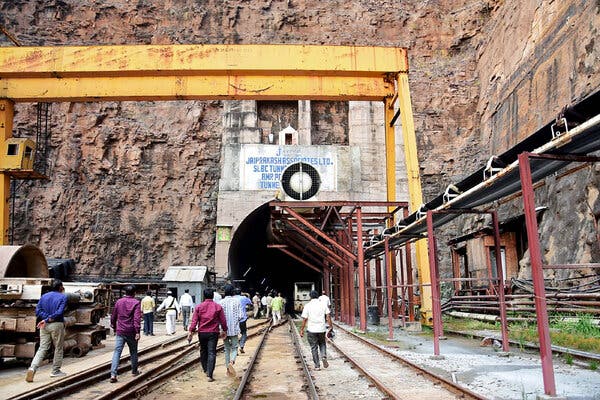India’s Longest Rail Tunnel
On April 16, 2025, India’s Railway Minister Ashwini Vaishnaw announced the successful breakthrough of the country’s longest rail tunnel at Janasu in Uttarakhand. This milestone is part of the Rishikesh-Karnaprayag Broad Gauge Rail Link Project. A tunnel breakthrough happens when two tunnel ends being dug meet, marking a key phase in tunnel construction. The breakthrough coincided with the 172nd anniversary of India’s first railway service.
Project Details
The Rishikesh-Karnaprayag project spans 125 km, with 104 km, or 83%, consisting of tunnels. Tunnel no. 8, measuring 14.57 km, is a twin tunnel, with the second tunnel expected to complete by July 2025. This ambitious project aims to connect key towns in Uttarakhand, enhancing regional connectivity and accessibility.
Tunnel Boring Technology
This project utilises a German-made tunnel boring machine (TBM) named ‘Shakti’. It is the first time TBM technology has been employed for railway tunnelling in mountainous regions of India. TBM technology allows for less disturbance to the environment compared to traditional blasting methods. The project also incorporates the New Austrian Tunnelling Method (NATM) for controlled excavation.
Geological Challenges
Constructing the tunnel involved overcoming geological challenges. The area is in Seismic Zone IV, requiring sophisticated design and continuous geological assessments. The tunnel passes through varying rock conditions, including hard and medium rock, complicating excavation efforts.
Logistics and Infrastructure
Transporting materials for the project posed logistical difficulties. Components weighing 165 MT were moved from Mundra port to the site via narrow Himalayan roads. The project also faced seasonal challenges, such as landslides and road closures, which could disrupt supply chains.
Significance of Rishikesh–Karnaprayag Railway Line
- Religious Importance: The railway will connect Rishikesh to Karnaprayag, linking it to the Char Dham pilgrimage sites: Kedarnath, Badrinath, Yamunotri, and Gangotri. It will ease travel for lakhs of pilgrims who visit every year.
- Travel Time Reduction: The new rail line will reduce travel time from 6–7 hours (by road) to just around 2 hours.
- Progress and Timeline: Over 70% of the project is completed as of early 2025. The entire line is expected to be operational by December 2026.
- Tourism and Employment Boost: The railway is expected to boost spiritual and eco-tourism in Uttarakhand. It will also create jobs, both during construction and after it becomes operational.
- Disaster Management: The railway will provide a more reliable and safer transport option than roads, especially during natural disasters like landslides and flash floods.
- Engineering Feat: The project showcases India’s ability to tackle engineering challenges while preserving the ecological balance in difficult terrains.
Future Prospects
Once completed, the project will include 12 new stations, 16 main tunnels, and 19 major bridges across five districts. The tunnelling works are expected to be completed by December 2025, with track and electrical installations to follow. The initiative aims to transform the region’s transport infrastructure, supporting broader economic development.
Month: Current Affairs - April, 2025
Category: Defence Current Affairs






